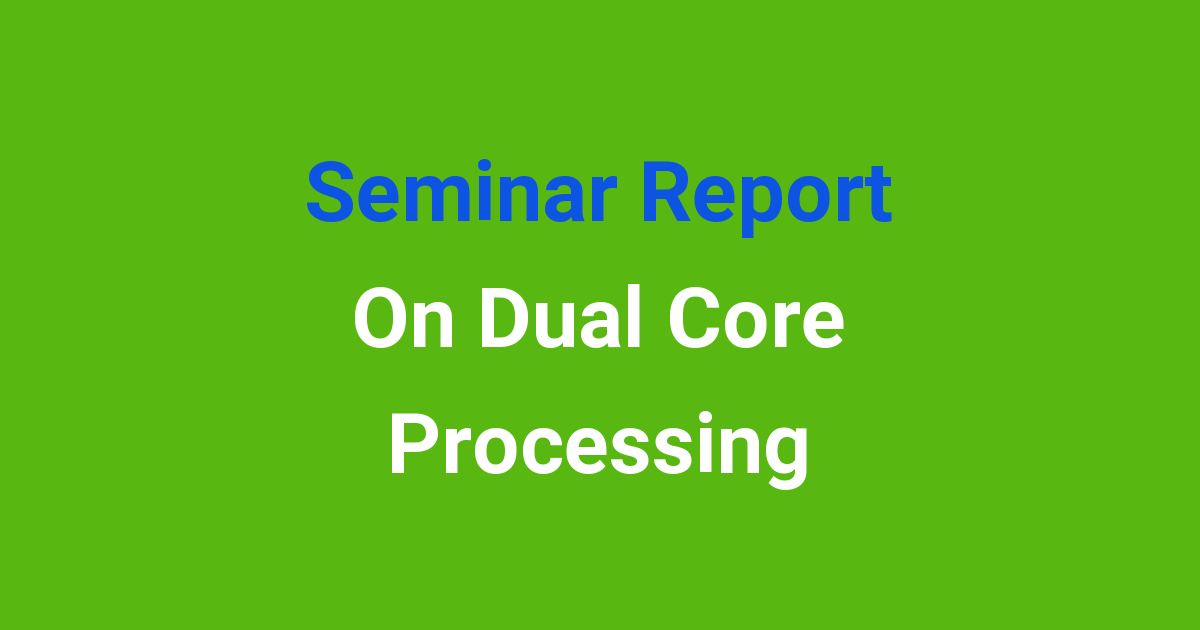Report on the seminar about dual core processing.
Seminar Report on Dual Core Processing
Introduction
Dual-core processing is a technology that allows two separate processors to work together on a single chip. This technology has become increasingly popular in recent years due to its ability to improve performance and efficiency in computing devices. In this seminar report, we will explore the concept of dual-core processing, its advantages, and its potential applications.
Problem Statement
In the past, single-core processors were the standard in computing devices. While these processors were able to handle basic tasks, they struggled with more complex calculations and multitasking. As technology advanced and the demand for faster and more efficient devices grew, it became clear that a new approach was needed. This is where dual-core processing comes in.
Existing System
The existing system relies on single-core processors to handle all tasks within a computing device. This means that the processor is responsible for executing all instructions and calculations, which can lead to bottlenecks and slow performance. Additionally, single-core processors struggle with multitasking, as they are only able to handle one task at a time.
Overall, the existing system is limited in its capabilities and is no longer able to meet the demands of modern computing. This is where dual-core processing offers a solution.
Disadvantages of Existing System
There are several disadvantages associated with the existing single-core processing system. Some of these include:
- Slower performance: Single-core processors are limited in their ability to handle complex calculations and tasks, leading to slower overall performance.
- Poor multitasking: Single-core processors struggle with multitasking, as they are only able to handle one task at a time.
- Increased power consumption: Single-core processors require more power to operate efficiently, leading to higher energy costs.
Proposed System
The proposed system involves implementing dual-core processing technology into computing devices. This technology allows for two separate processors to work together on a single chip, effectively doubling the processing power and improving efficiency.
By utilizing dual-core processing, computing devices will be able to handle more complex calculations and tasks with greater ease. Additionally, multitasking will be greatly improved, as each core can handle a separate task simultaneously.
Advantages of Proposed System
There are several advantages to implementing dual-core processing in computing devices. Some of these include:
- Improved performance: Dual-core processors offer greater processing power, allowing for faster and more efficient performance.
- Enhanced multitasking: With dual-core processing, computing devices can handle multiple tasks simultaneously, improving overall efficiency.
- Reduced power consumption: Dual-core processors are more energy-efficient than single-core processors, reducing overall power consumption.
Features of Dual-Core Processing
Some key features of dual-core processing technology include:
- Two separate processors working together on a single chip.
- Improved performance and efficiency in computing devices.
- Enhanced multitasking capabilities, allowing for multiple tasks to be handled simultaneously.
- Reduced power consumption, leading to lower energy costs.
Conclusion
In conclusion, dual-core processing technology offers a promising solution to the limitations of the existing single-core processing system. By implementing dual-core processors in computing devices, we can expect to see improved performance, efficiency, and multitasking capabilities. Overall, dual-core processing represents a significant advancement in the field of computing and is poised to revolutionize the way we use and interact with technology.

